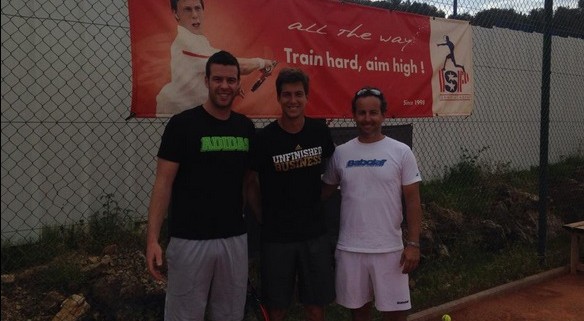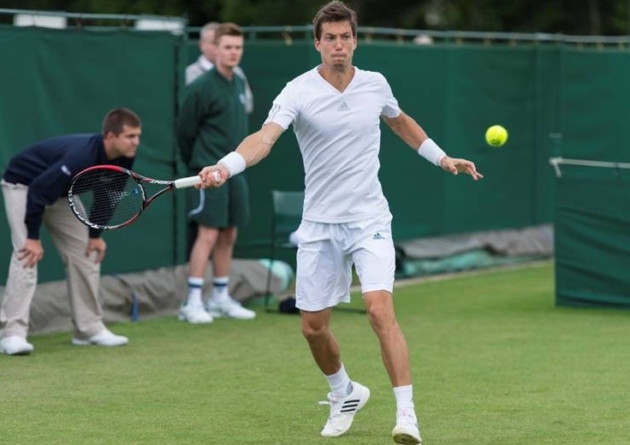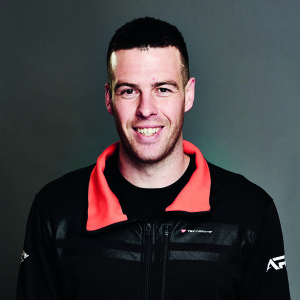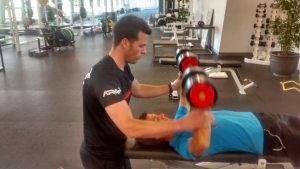Life on the Road with a Top 100 Pro Tennis Player
APA is a company that has built it’s reputation on being the Industry Leader in S&C training for Tennis, which is why we get to work with pro players like Alijaz Bedene, Ed Corrie and Dan Cox, as well as a whole host of pro players hungry to follow in their footsteps!
You might have seen that Alijaz Bedene was in the news recently after he recently became a British citizen. Congratulations Alijaz! You can see the full article HERE
So now that we have a Top 100 tennis player on our books and many more pros fast on his heels, it makes me ask the question………………….
What makes us unique?
Well for a start……………..
All of our coaches are Tennis specialists. It is what we do.
We have a proven Training system for getting results that is specifically designed for Tennis
All our coaches understand that coaching is about more than our knowledge. Yes all our coaches are highly qualified, know about correct exercise technique, nutrition and writing programmes etc. but we also believe in coaching the person as well as the athlete – we go the extra mile to really get to know our clients beyond the hour-long training session so you stay committed.
Now, if you read the last post on Andy Murray you’ll know I promised to follow it up with some insights on working with Alijaz Bedene. I’m delighted to say that Alijaz’s S&C coach Martin Skinner has agreed to write a guest blog. In this blog he will share some insights on how he gets the best out of not just Alijaz but any client for that matter. It links really well to the point above on coaching the person as well as the athlete.
Life on the Road with a Top 100 Pro Tennis Player: By Martin Skinner
About me
My name is Martin Skinner and I’m a Strength and Conditioning (S&C) coach currently working within tennis. I’ve been lucky enough to work with one of the best teams in British tennis at Gosling International High Performance Centre, which is in my opinion cultivating some of the best young coaches in the country. Tennis director Matt Willcocks, who gave me my break in tennis in 2008, spotted my potential and gave me the opportunity to start my career within tennis for which I’m forever grateful. I started off learning my trade as the apprentice of Daz Drake whom has been very knowledgeable and a great mentor over the years. The guidance of both Matt and Daz has shaped my coaching philosophy to what it is today. That’s not to say it isn’t still evolving, however the values these two people have given me never change. I started my S&C career just like most people having only a few hours of S&C work a week with predominately U12’s and some juniors whom were as keen as I was to improve and learn. From these few hours a week I began to work with some full time players, that is where I got my break in S&C. As soon as you get an athlete whom you can work with more than once a week the rate of improvement will rocket if you seize the opportunity. These are the small gems that get you noticed by other coaches and parents and to cut a long story short this is how I have ended up coaching where I do today.
That’s a little snap shot of how I was given the opportunity to become a full time S&C coach. I had never envisaged that today I would be writing a blog to other aspiring S&C coaches, so for this opportunity I’m very humbled and grateful and I hope you find this useful. Many people are excited by what happens in professional sport and what goes on behind the scenes with elite athletes and teams. I will attempt to give you an insight into what I’ve found makes the difference to a tennis player’s performance.
Aside from having a very effective and consistent physical pre-season, there has been an ongoing underlying factor that cannot be tested during any fitness test. This was the coaching of the person, not the player and instilling belief. These are probably things you have heard before? If not! Then in my opinion these two factors are single handedly, the most important when coaching an athlete. They are not only the metaphorical “icing on the cake” but are key ingredients to the whole cake. I will now attempt to explain how I utilize these two ingredients with my players.
Coaching athletes vs People
Firstly what I mean by coach the person and not the player is you must start to understand how the “Beast” operates throughout their daily life. This will allow you to be able to change their performances on the practice court, gym and most importantly be more effective during matches. For example if your player is always late or just on time to practice, you will find they are the same off the court. This may seem like a trivial matter and simple to rectify, however you may find this tougher than you might think to effectively change the actual person’s habitual behaviors. Many coaches might use punishments in the gym, on the court or a fines system to change an athlete’s time keeping during practices and it may work! But this will probably only change their attitude towards their sport not how they operate in daily life, which is the most important change as they will start to be more professional and demand a higher level of their entire lives. These perceived to be small changes will have massive impact on a player’s every day life, which will serve as a platform to perform further changes in building belief. For example once a matter such as time keeping is under wraps you give your self the opportunity to use phrases such as “no body is working as effective and professional as you right now”. This will massage their ego but will actually start to get them to change what they value and essentially how they operate. Never underestimate the small changes and the platforms they open up for you to improve the person, which supports the development of the player.
Do you have the belief in your players?
Now I would like to discuss the second ingredient to a successful player “Belief”. Belief in your ability and physical attributes is much stronger than that of any 1RM squat or PB in a Yoyo test. Instilling the belief that the player is the fittest and most powerful player on the court and almost superhuman, can give the player that mental strength they require to apply all that hard work from the gym and on the track to the match court. Some players who don’t have that belief can find themselves powerless to putting their physical abilities onto the court. This can be the margin between winning and losing. People may be reading this thinking ok great but where do I start instilling belief? Firstly you get to know the person as discussed earlier then you need to make sure that as a team you are all singing from the same hymn sheet. Not just the coaching team, but the player’s whole support network: parents, siblings, girlfriend/wife, tennis coach, psychologist, physiotherapist. The list may be even longer for your player or team. You need to immerse yourself in the athletes whole life this is the only way to build trust with your athlete. If you’re the coach who is only there when you’re being paid then high performance sport is probably not for you. To enable you to know the “Beast” you are trying to mold you must understand how they tick. So if you can get the support team around the player to believe in them whole-heartedly then the athlete will begin to believe. If you are managing a player and a member of your team doesn’t whole-heartedly believe that this player is capable of amazing things then they can start to be a part of the problem. Therefore everyone needs to tow the line, know the goals, core values of the team and live them if they don’t its probably best you limit this person’s involvement in the team.
A few helpful tips that I got from a fellow coach were to start altering the language you use around a player. For example; if you say “morning bud how are you?” this may give the player an opportunity to think too much about maybe a slightly disturbed sleep etc. We as a team changed this to “Morning champ looking strong today!” or Beautiful morning for winning isn’t it?”. This may seem extreme to some coaches but these small boosts in positive language start to rub off on the player and the whole team. Never underestimate the power of positivity!! However please don’t think for a second that you can instill belief in a player’s ability without them actually having some substance. So you have to make sure that the attributes of their game that you are trying to build belief or confidence in is actually there. So if your using language like “no one can outlast you on the court, you never miss a ball!!” but your player can’t last 3 sets playing 3 hours in 28 degrees heat, then your words will stop instilling belief and start to instill questions in your ability to see their strengths and weaknesses.
Conclusions
In summary you must firstly coach the player not the athlete: players are complex and to get the best out of them you must know how they operate. Secondly build confidence and belief by taking your player’s best physical attribute and reinforce how good that attribute is!! Then finally immerse yourself in their life on and off the court, give them the opportunity to feel part of a family that values and believes in them. These are the two gems I found over my ten years of coaching that are not taught on any course or in any manual, but are what can separate a good coach from a great one.







